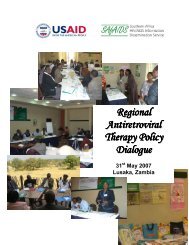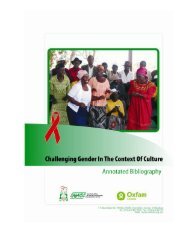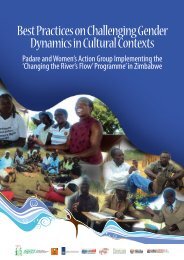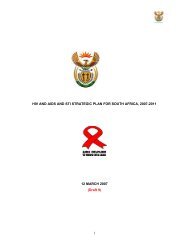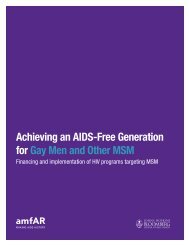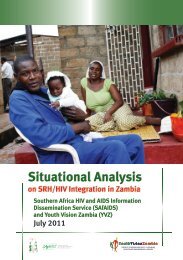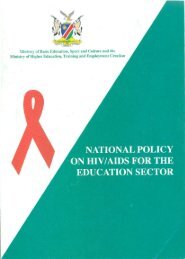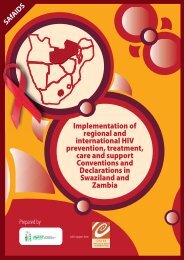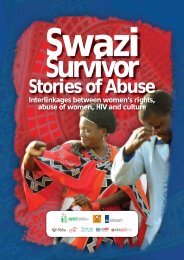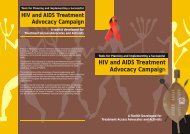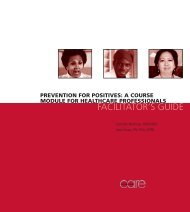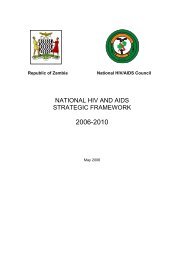A Success Story: The Etafeni Trust Fit for - SAfAIDS
A Success Story: The Etafeni Trust Fit for - SAfAIDS
A Success Story: The Etafeni Trust Fit for - SAfAIDS
You also want an ePaper? Increase the reach of your titles
YUMPU automatically turns print PDFs into web optimized ePapers that Google loves.
Step 2: Outlining the Descriptive Details of the Impact. Who<br />
Participated in the Achievement of the Results<br />
<strong>The</strong> story seeks to record where the intervention took place, and during what time<br />
period, referring to what need is being met by the intervention, and what behaviour<br />
change (to reduce a certain vulnerability or risk) is intended by the introduction of the<br />
intervention. <strong>The</strong> target audience (intended beneficiaries), and stakeholders (including<br />
different community groups and bodies) involved in the intervention, from inception<br />
onwards, have been described, including their respective roles. <strong>The</strong> link between<br />
their involvement and the positive impact is shared as observed, and the description<br />
of positive impact seeks to reflect two important elements of the success story:<br />
integration and universal participation.<br />
Step 3: Answer 8 Key Impact Question<br />
Data collection tools were designed. Data collected was analysed and collated. <strong>The</strong><br />
write-up presents in<strong>for</strong>mation answering the following overarching questions:<br />
• What did they do? (stakeholders, <strong>for</strong> instance, programme designers,<br />
implementers, beneficiaries, community at large, other supporting<br />
structures). What were the approaches used?<br />
• How did they do it? Were innovative approaches employed with the<br />
specific target audience to meet the specific need? Was a rights-based<br />
approach considered? Was there multi-sectoral involvement? Can others<br />
easily do it as well (adapt and replicate)?<br />
• How long did it take? Were the processes tedious, or effective within<br />
relatively short periods? Would it be possible to scale-up the intervention<br />
easily?<br />
• What were the opportunities identified during programme roll-out and<br />
how were they directly/indirectly related to the positive impact?<br />
• What did it cost? Were cost-effective strategies employed and how?<br />
• What were the results? Were the objectives of the programme met<br />
(even beyond expectations)? What were the main positive changes that<br />
can be attributed to what was done (strategies and approaches) during the<br />
programme?<br />
• Are the results long-lasting? Were the approaches sustainable, or are<br />
there plans to ensure sustained results <strong>for</strong> the beneficiaries?<br />
• What were the challenges faced, how were these overcome, and how<br />
did they affect positive impact?<br />
Step 4: Illustrate the <strong>Story</strong> of at least one that Represents the<br />
Project Impact on Many<br />
As the success story was prepared using in<strong>for</strong>mation collected in response to the<br />
above eight Impact Questions, the experiences of one of the beneficiaries is shared to<br />
illustrate what happened, including anecdotes.<br />
7



